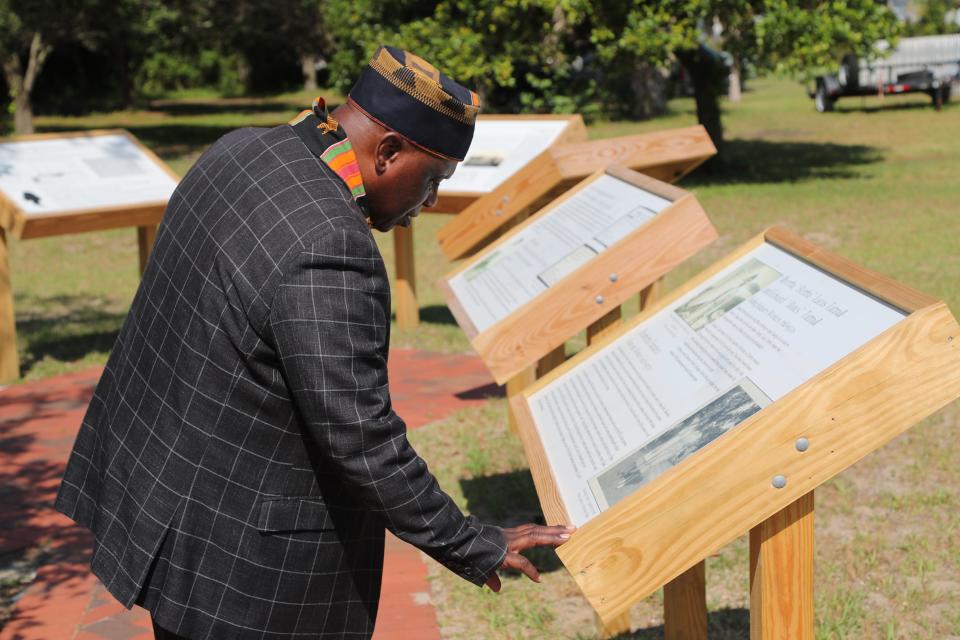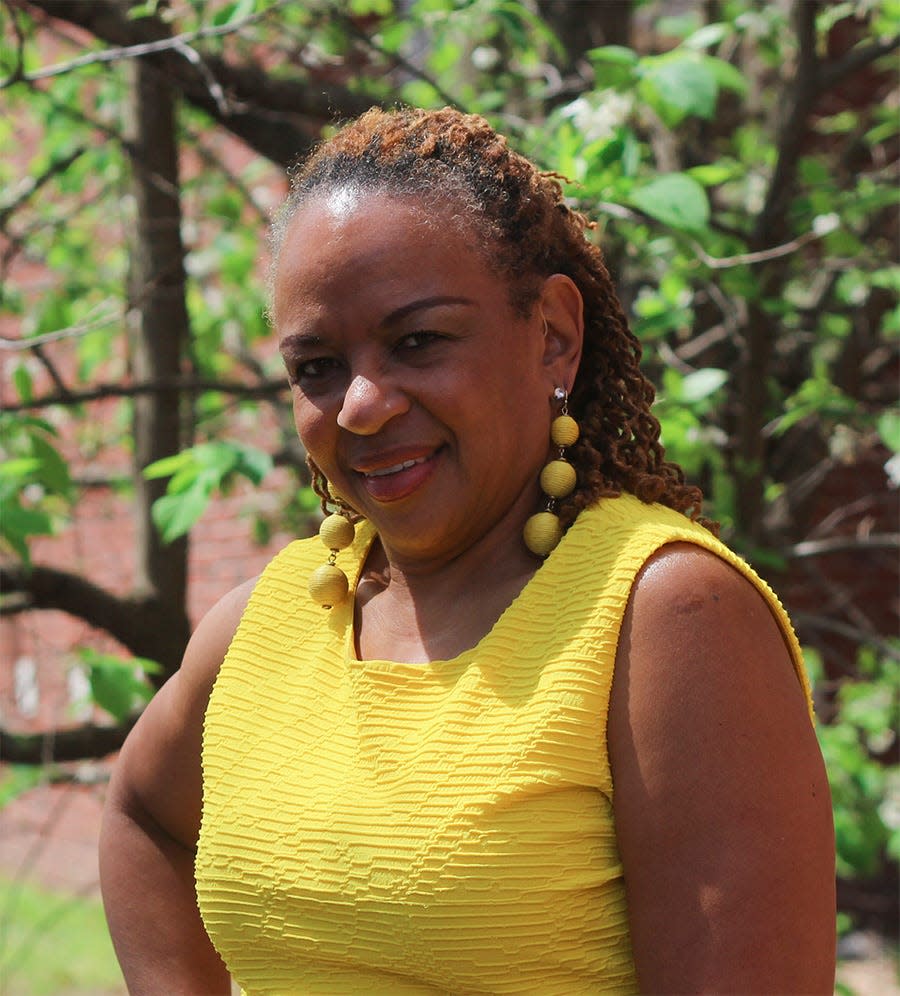What connects Pin Point with Ossabaw? There's more history to Georgia's sea islands than many know
Many locals and tourists, alike, enjoy visiting the Sea Islands of Georgia. Several of those Islands are known as barrier Islands because they protect the coastlines from erosion from the surrounding wind, waves, tides, currents, storms and hurricanes produced by the sea.
What many don’t know is the connection of these barrier islands to the nearby mainlands and the Gullah Geechee communities who live there. Can you connect the listed Islands to the correct community mainland below? Not all the barrier islands are listed, but hopefully you’re familiar with the ones that are.
Sapelo Savannah
Cumberland Brunswick
Jekyll Pinpoint
Tybee Liberty County
Ossabaw Brunswick
St. Catherine’s St. Mary
St. Simons Darien County

Ossabaw Island
Ossabaw Island is connected to the mainland by way of Pinpoint. Pinpoint was settled in 1896 by former enslaved persons from Ossabaw, Green and Skidaway islands. Today, Pinpoint is home to a settled Gullah Geechee community and the Pin Point Heritage Museum.
In 1758, Ossabaw Island began its connection to Gullah Geechee history, through Great Britain’s King George II who gained the island from the Creek Indians. John Morell, who purchased half of Ossabaw in 1760 and the other half in 1763, cultivated the land by the work of enslaved Africans. Known for the cultivation of indigo on the island, the enslaved also managed the cattle, pigs and poultry. This is the earliest indication of African enslaved people living and working on Ossabaw Island.

Cumberland Island
Cumberland Island is connected to the mainland of St. Mary, a small city located in Camden County.
Cumberland Island is Georgia's largest barrier island. Native Americans became the first residents as early as 4,000 years ago. They abandoned the island by the 18th century because of European displacement and settlement. In 1733, James Oglethorpe arrived and renamed the island after Prince William, the Duke of Cumberland. Soon after, Gullah Geechee history began with cotton, the "king crop." The first major plantation, Dungeness, was established by the Miller family, who relied on the forced labor of over 200 enslaved people. After the Civil War, former enslaved persons and their offspring remained on the island to establish a vibrant Gullah Geechee community at the island's north end, with their own church and cemetery.
St. Catherines Island
The Gullah Geechee connection to St. Catherines Island is not well known. This Island is linked to the mainland of Liberty County.
Native Americans used St. Catherines as a hunting and fishing ground as many as 4,000 years ago. The island became part of the Georgia colony and was given to Mary Musgrove, the Indian princess who served as translator for the English. Musgrove and her husband Thomas Bosomworth established a plantation once slavery became legal in Georgia in 1749.
Following the Civil War, St. Catherines came under the control of the Freedman's Bureau and was overseen by Tunis Campbell. Campbell was appointed to supervise land claims and resettlement on St. Catherines and four other islands: Ossabaw, Delaware, Colonels, and Sapelo. Campbell purchased 1,250 acres in Georgia’s McIntosh County and established an association of black landowners. By 1868, Campbell and more than 200 former enslaved persons had created a fishing and farming community on St. Catherines Island. Eventually a 300-strong African American militia protected the colony from reprisals by the Ku Klux Klan.

Sapelo Island
Sapelo Island is connected to the mainland of Darien County. Residents are currently engaged in a battle to keep their land and their culture on the island.
Enslaved Africans were brought to the island during the 18th and 19th centuries as laborers for plantations. Residents descended from these Africans still live on the island in Hog Hammock, representing the only Gullah Geechee community on any Georgia barrier island.
These enslaved West Africans embraced the conditions of the land and nurtured the growth and survival of their families by connecting their strength and resilience to the land itself like they would do in their homelands of West Africa. They brought their traditions with them but used the new natural materials to continue cultural and tradition, like basket sewing. Additionally, the spirit of their relationship with nature framed their existence as indigenous. The land ― and everything that the land produced ― became an expression known as “the indigenous culture of the Gullah Geechee people on Sapelo Island.”
Jekyll Island
Jekyll Island is connected to the mainland of Glynn County.
The Wanderer was the last ship to bring enslaved people from Africa to Georgia. On November 28, 1858, the Wanderer arrived at Jekyll Island, where its crew smuggled ashore 409 West African captives. The incident is especially noteworthy because the federal Slave Importation Act, passed in 1807, had officially banned the foreign importation of enslaved people into the United States.
Arrangements were made with the DuBignon family, who owned Jekyll at the time, for the captives to be brought first to the island and from there smuggled out for sale across the South from Florida to Texas. Some were sold to families in Aiken and Edgefield County, South Carolina. Some remained on Jekyll and became property of the DuBignons.
Within three years of that secret arrival of the Wanderer on Jekyll, the South and the North went to war and within five years all who’d been enslaved were declared free.

St. Simons Island
St. Simons Island is the largest barrier island in the Georgia Golden Isles and is also connected to the mainland of by way of Brunswick in Glynn County.
In May 1803, the Igbo and other West African captives arrived in Savannah. They were purchased for an average of $100 each by slave merchants John Couper and Thomas Spalding to be resold to plantations on nearby St. Simons Island. After being transported on the York to Dunbar Creeak, these individuals were a part of the largest mass suicide of enslaved people.
Susie King Taylor was born into slavery in Georgia and was secretly taught to read and write by various teachers. In 1862, she and many other slaves escaped to freedom on St. Simons Island, then occupied by Union troops. There, she began to serve as an army nurse and worked with the 1st South Carolina Volunteers, a black regiment that was later reorganized into the 33rd U.S. Colored Regiment. Because of her education, she wrote a memoir of her experiences after the war ended.

Tybee Island
Tybee Island is connected to the mainland through the city of Savannah.
Between 1795 and 1803, about 796 captive Africans set sail for Tybee, only 667 enslaved Africans survived the Middle Passage voyage and landed on Tybee Island’s shores. On the western end of the island, an area known as a “Lazaretto,” a variation of an Italian word meaning "hospital for the contagious," was established to quarantine slaves and other passengers who may have been carrying diseases. Tybee would be the final port of call for many of those quarantined there. Those who were healthy were taken to Savannah to be sold. Those who weren’t healthy were left to die. Lazaretto Day is a tribute to those people who were taken from their homeland and brought to Tybee Island for quarantine.
Go alone or with friends and family. Take a car or a boat. You’ll leave informed and inspired.

Maxine L. Bryant, Ph.D., is a contributing lifestyles columnist. She is an assistant professor, Department of Criminal Justice & Criminology; director, Center for Africana Studies, and director, Gullah Geechee Cultural Heritage Center at Georgia Southern University, Armstrong Campus. Contact her at 912-478-1248 or email [email protected]. See more columns by her at SavannahNow.com/lifestyle/.
This article originally appeared on Savannah Morning News: Connections between Georgia's sea islands and Gullah Geechee communities
